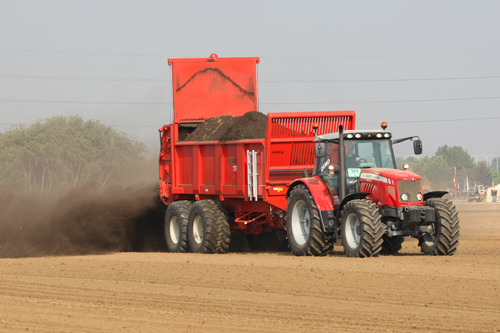 Photo: eutrophication&hypoxia/flickr.com/ CC BY
Photo: eutrophication&hypoxia/flickr.com/ CC BY
A little more than a century ago Fritz Haber invented a way to make synthetic ammonia out of pure air. The process was soon scaled up for industrial use by Carl Bosch. The method known as the Haber-Bosch process revolutionised agriculture. The cheap nitrogen fertilizer gave higher yields. A surplus of grain made it possible to raise animals on concentrated feed. Meat consumption soared. Today it is estimated that about half of the nitrogen in our food originates from the Haber-Bosch process.
This has come at a price. Nitrogen pollution causes eutrophication, contaminated groundwater, global warming and deteriorating air quality.
An attempt to address some of these problems is found in the Commission’s proposal for a new National Emissions Ceilings (NEC) Directive, which is right now under consideration by the European Parliament and the Council. The proposal includes a reduction in ammonia of 27 per cent from 2005 to 2030, with an interim target of 6 per cent by 2020.
Compared with the reduction targets set for other pollutants, it cannot be considered ambitious. But the reduction by 2030 would at least require that the agricultural sector (responsible for more than 90 per cent of emissions) would have to do something more than business as usual.
Farmers’ lobbies say that the ammonia abatement will be too costly. In fact measures to reduce ammonia offer a particularly high benefit-to-cost ratio, which is mainly because available “low-hanging fruit” for mitigation has yet to be implemented.
Since the measures to achieve these objectives are not specified in the proposed directive, it is possible for countries to design measures under the rural development programme to finance some of the costs. Even better, reduced ammonia losses can actually be cost-effective on a farm level, since more nitrogen is left for the crop.
Emissions from agriculture are easily forgotten. Maybe because they do not fit the classic image of emissions – something that leaves a tall smokestack or exhaust pipe. Normally these emissions are not even visible (though can quite often be smelled).
The fact that they are hard to see does not unfortunately make them harmless. In March this year Paris suffered from acute high levels of particulate matter. This was due in large part to high ammonia emissions in the region during this period, resulting in the formation of secondary particles. In the future, the role of ammonia for the formation of secondary particles will be even greater. Because of the significantly more ambitious reduction targets for NOx (69%) and SO2 (81%).
Eutrophication is another problem caused by ammonia emissions. Under current legislation more than half of all ecosystems in the EU-28 will be exposed to excess nitrogen deposition by 2020. For Natura 2000 areas the figure is even higher.
If the European Parliament and the Member States endorse or better yet reinforce the proposed ammonia targets it will be of great importance for both human health and biodiversity in the EU. While this comes at a price, it neither threatens food security or European agriculture as an economic sector. And the health benefits outweigh by far the abatement costs.
Kajsa Lindqvist
















